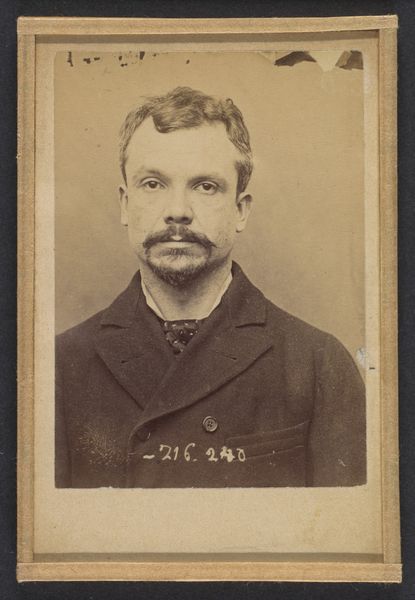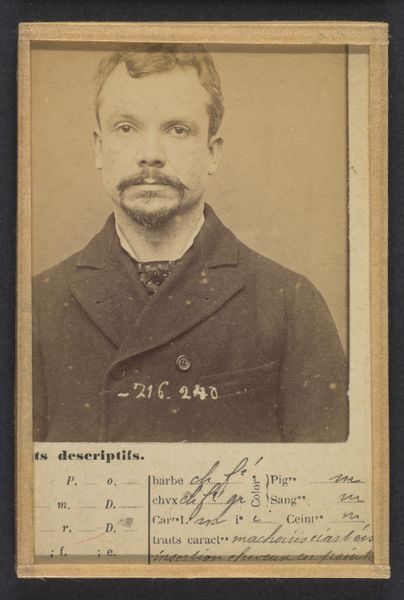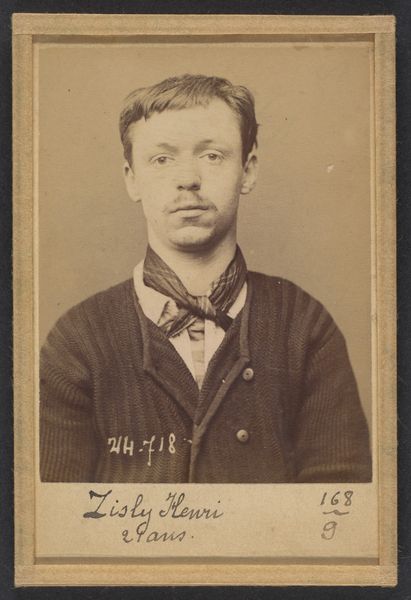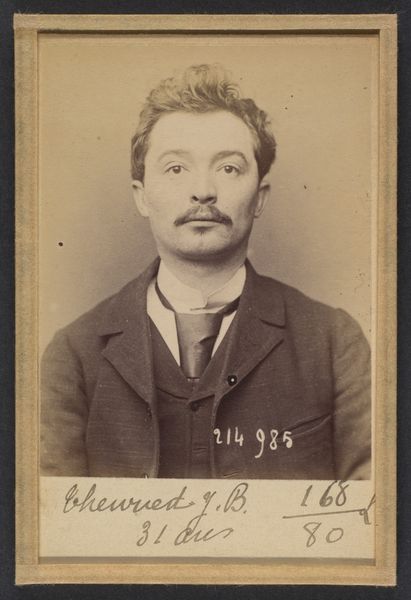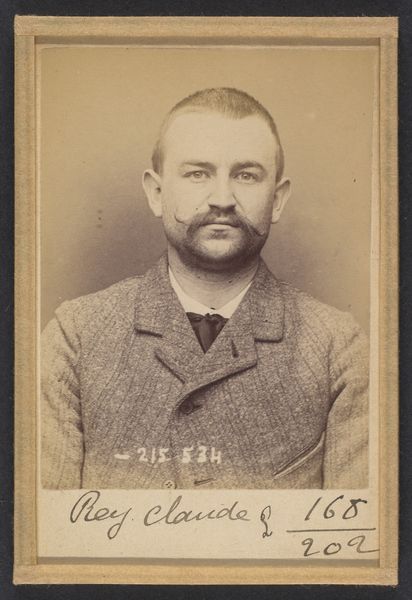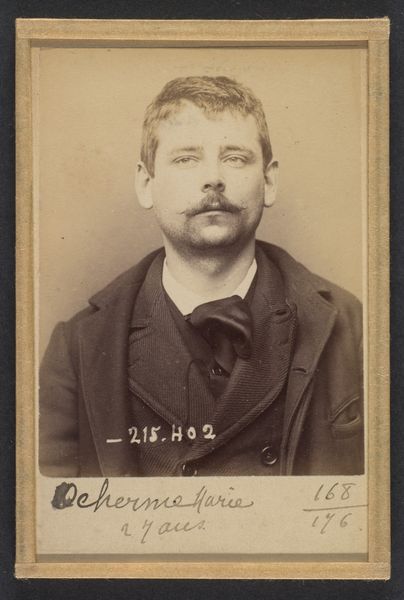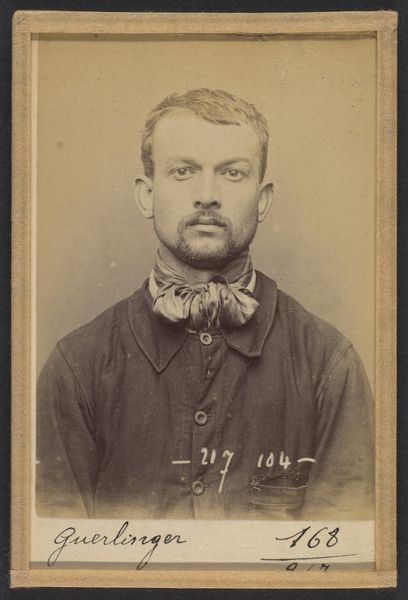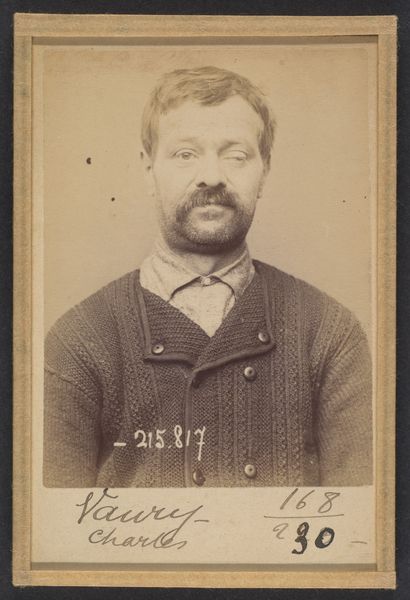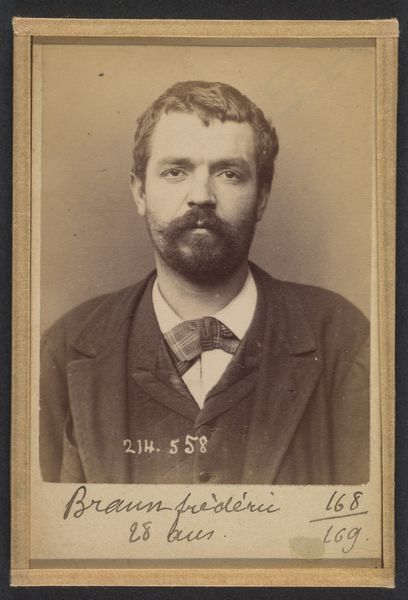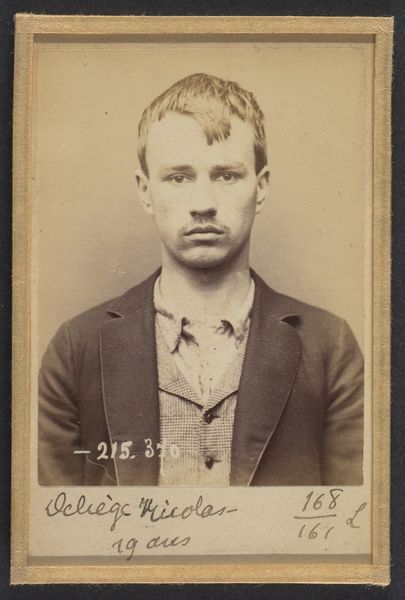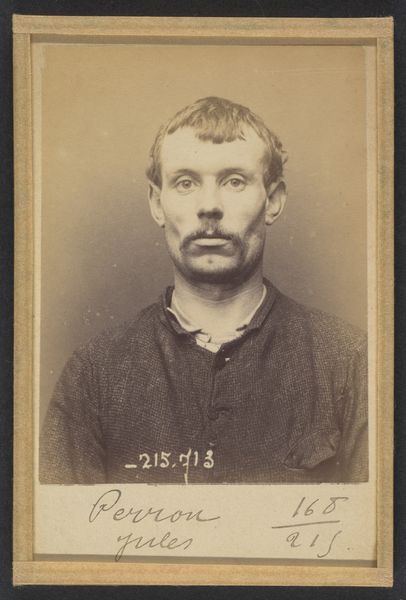
Rochet. Théophile. 24 ans, né à Rennes (Ille-et-Vilaine) le 7/6/69. Cordonnier. Anarchiste. 18/3/94. 1894
0:00
0:00
photography, gelatin-silver-print
#
portrait
#
portrait
#
photography
#
gelatin-silver-print
#
poster
Dimensions: 10.5 x 7 x 0.5 cm (4 1/8 x 2 3/4 x 3/16 in.) each
Copyright: Public Domain
Editor: So this is a gelatin-silver print titled "Rochet. Théophile. 24 ans..." made in 1894 by Alphonse Bertillon. The detail is incredible for a photograph of its age, but it feels less like art and more like… a record. What's your take on it? Curator: I see it as both, and that tension is crucial. Bertillon's system aimed to classify and control individuals through meticulously documented physicality. He's applying the lens of emerging industrial processes to human bodies, treating them as raw material. The materials – the photographic chemicals, the cardstock, the standardized inscription – all become tools of a proto-surveillance state. Editor: So, even the photograph itself is a kind of technology of control? Curator: Precisely. Consider the labor involved: the photographer, the record-keepers, and even Rochet himself, forced to participate in his own subjugation. Is the artistic value in Bertillon's eye, or is it in our later recognition of the system being imposed and critiqued, sometimes subconsciously, via such images? Think, too, of how this process differs from portraiture made for elites. This photo served an altogether different market – power and control. Editor: It’s unsettling to think of this photo as part of that larger machine, rather than just an individual image. I hadn't really thought about it that way, focusing more on the person depicted, his job, his political alignment, rather than the process. Curator: That discomfort is precisely the point. It challenges us to confront the material realities behind seemingly objective representations. We must question what these historical images show us, not only in terms of artistry but regarding labor, control, and commodification of human identity. Editor: This gives me a lot to consider regarding this photograph! I’m intrigued by this re-examination and by deconstructing my ideas about art to analyze more the cultural impacts involved. Curator: Exactly. Questioning boundaries enriches both the understanding of historical artwork and of present creative output.
Comments
No comments
Be the first to comment and join the conversation on the ultimate creative platform.
